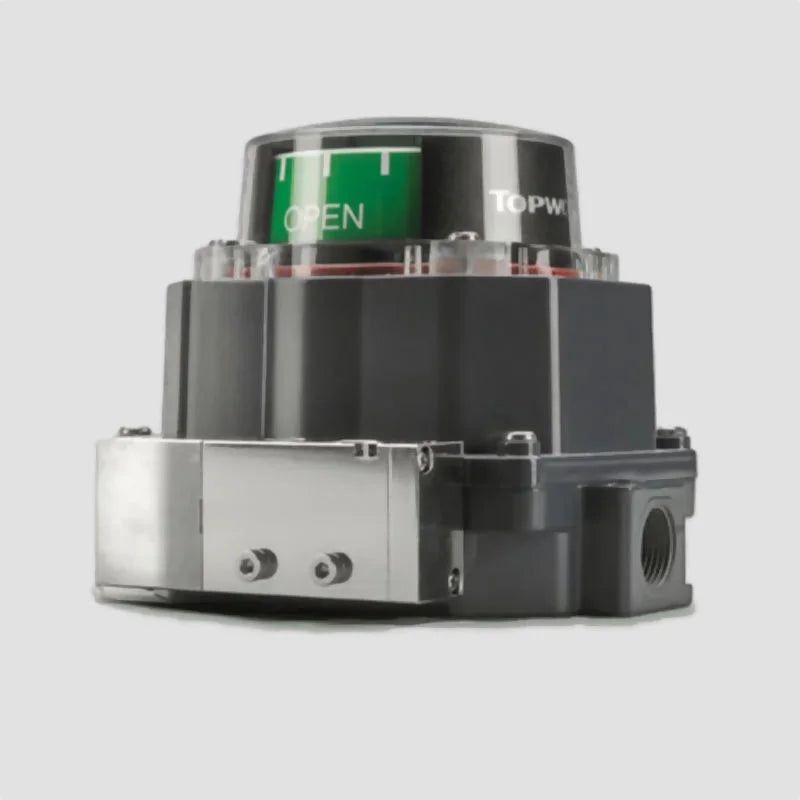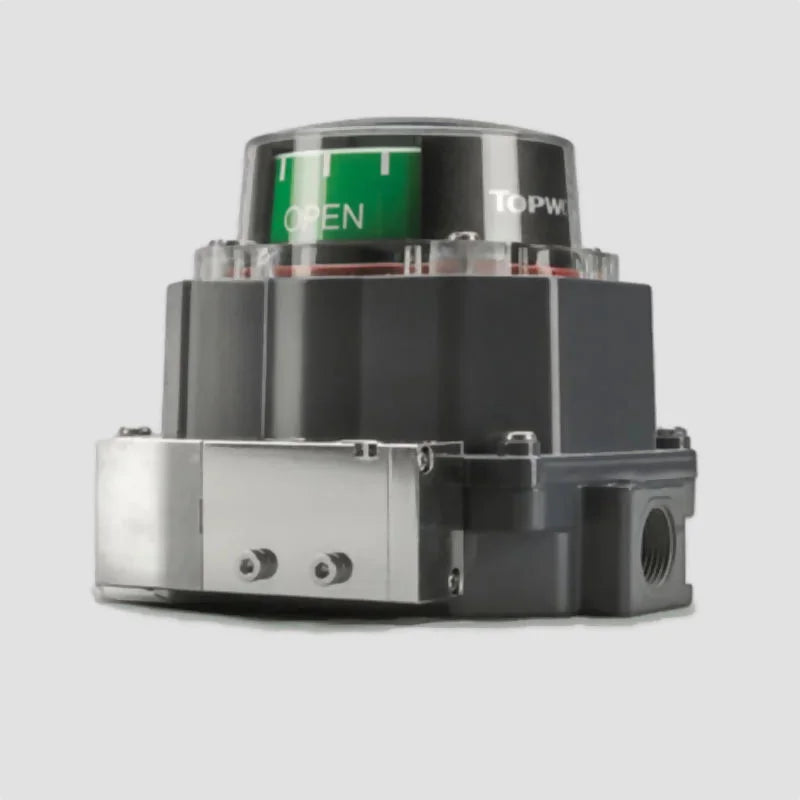Topworx Switchboxes
TopWorx Limit Switch Box TVL-R2GGNPM1A1 Valve Monitor
TopWorx Limit Switch Box TVL-R2GGNPM1A1 Valve Monitor
Couldn't load pickup availability
The TopWorx TVL-R2GGNPM1A1 Limit Switch Box is a compact yet heavy-duty valve monitor, equipped with GO™ proximity switches to provide exceptional valve position feedback in some of the harshest industrial environments. Designed as part of the TopWorx TVL Series, this model is ideal for use with quarter-turn pneumatic actuators, offering precise and contactless open/closed feedback in applications where reliability and durability are non-negotiable.
Built with a glass-reinforced polyester (GRP) housing, IP67 ingress protection, and NAMUR mounting interface, the TVL-R2GGNPM1A1 is well-suited for environments like oil & gas, chemical plants, mining, marine, and wastewater facilities. Its dual GO™ SPDT proximity switches are known for their long service life and resistance to extreme conditions like vibration, moisture, and corrosion.
🔑 Key Features:
2 × GO™ Proximity Switches: SPDT contactless switches for long-lasting, high-precision feedback
Visual Dome Indicator: Clearly displays valve position (open/closed)
Universal NAMUR Mounting: Quick and compatible fit for most pneumatic actuators
IP67 Enclosure Rating: Waterproof and dust-tight for maximum protection
Durable GRP Construction: Lightweight yet corrosion-resistant for tough environments
Dual Cable Entries: 2 × 1/2” NPT conduit ports for flexible wiring
Wide Temperature Tolerance: Operates reliably from -40°C to +85°C
Field-Proven Performance: Built for high cycle rates and demanding applications
📊 Product Specifications
| Specification | Details |
|---|---|
| Model | TVL-R2GGNPM1A1 |
| Manufacturer | TopWorx (Emerson) |
| Series | TVL Series |
| Switch Type | 2 × GO™ SPDT Proximity Switches |
| Visual Indicator | Dome-Style Open/Closed Indicator |
| Mounting Interface | NAMUR Standard |
| Enclosure Rating | IP67 |
| Material | Glass-Reinforced Polyester (GRP) |
| Conduit Entries | 2 × 1/2” NPT |
| Operating Temperature | -40°C to +85°C |
| Certifications | CE, CSA, ATEX (varies by configuration) |
| Applications | Pneumatic Valves, Hazardous Areas, Process Control, Outdoor Installations |
The TopWorx TVL-R2GGNPM1A1 is built for engineers and operators who demand accuracy, ruggedness, and long-term reliability. With GO™ Switches at its core, it provides worry-free valve position monitoring even in the most aggressive and unpredictable conditions.
📞 Need expert advice or fast delivery? Get in touch with our team today – we’ll help you get the right valve monitor for your application!
Share

Enquire Online!
FAQ's
What is the difference between a valve and an actuator?
What types of actuators are available?
The main types of actuators are:
Pneumatic actuators – use compressed air for fast, reliable operation.
Electric actuators – use electrical power for precise control.
Hydraulic actuators – use fluid pressure for high-torque applications.
Each type offers unique advantages depending on the environment, media, and system control needs.
How do I choose the right actuator for my valve?
To select the correct actuator, consider:
Valve type and torque requirement
Power source available (air, electric, or hydraulic)
Operating environment (temperature, humidity, hazardous area)
Control signal type (on/off or modulating)
Matching actuator torque and compatibility with the valve’s ISO mounting ensures reliable performance.
What are the main types of valves used in automation?
The most common valves in automated systems include:
Ball valves – for tight shutoff and quick operation.
Butterfly valves – for larger flow control with compact design.
Globe valves – for precise throttling and flow regulation.
Check valves – to prevent backflow.
Gate valves – for full bore flow isolation.
What’s the difference between a double-acting and spring-return actuator?
Double-acting actuators use air (or power) to both open and close the valve.
Spring-return actuators use air to open (or close) the valve, and a built-in spring to automatically return it to a safe position when power or air is lost — ideal for fail-safe operation.
How often should valves and actuators be serviced?
Regular maintenance intervals depend on operating conditions, but a good rule of thumb is to inspect every 6–12 months.
This includes checking for leaks, lubrication, seal wear, and actuator responsiveness to prevent unexpected downtime.

